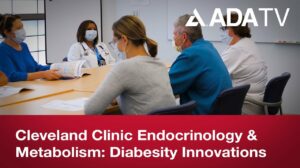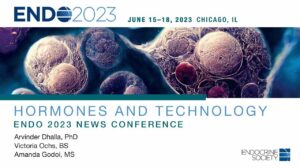By Anthony J. Brown, MD
NEW YORK (Reuters Health) – A 600 MBq dose of 131Iodine, female gender, lower presenting free T4 level, and absence of a palpable goiter are all independent predictors of cure with radioiodine for hyperthyroidism, new research shows.
Some of these factors, including a 600 MBq dose and female gender, also predict the development of hypothyroidism after 1 year, according to the report in the January issue of Clinical Endocrinology.
“This is the first study to identify a number of independent clinical and laboratory parameters to predict the probability of cure and the risk of development of hypothyroidism in patients receiving radioactive iodine to treat hyperthyroidism,” lead author Dr. Kristien Boelaert, from the University of Birmingham, UK, told Reuters Health.
Dr. Boelaert and colleagues analyzed data for 1278 patients who presented with hyperthyroidism to the Thyroid Clinic at the Queen Elizabeth Hospital, Birmingham, from 1984 to 2006. Most of the patients — 1013 – were women. Radioiodine therapy was given as a single dose of 185, 370 or 600 MBq.
The cure rate with the 600 MBq dose was 84.1%, significantly higher than the 74.9% and 63% rates with the 370 or 185 MBq doses, respectively. The hypothyroidism rate at 1 year was also higher with the 600 MBq dose: 60.4% versus 49.2% and 38.1% with the 370 and 185 MBq doses, respectively.
In addition to the 600 MBq dose and female gender, younger age, absence of a palpable goiter, and presence of ophthalmology were independent predictors of hypothyroidism at 1 year.
Based on the findings, the authors were able to generate formulae that accurately predicted cure and risk of hypothyroidism after radioiodine treatment.
Dr. Boelaert said that clinical use of the predictors found in the study could help identify “patients who should receive higher (radioiodine) doses, thereby increasing the chance of cure in some and minimizing the risk of development of hypothyroidism in others.” This group includes men, those with palpable goiter and patients with more severe hyperthyroidism.
She added that “further evaluation of these findings and the validity of these formulae are required in different patient populations around the world, especially those exposed to different environmental factors affecting iodine intake.”
Reference:
Clinical Endocrinol 2009;70:129-138.




